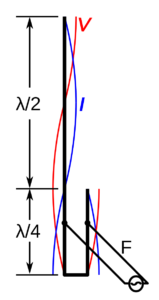7.3 antenna feed arrangements – tee, gamma, stubs

Antenna Feed Arrangements – Tee, Gamma, Stubs
This chapter explores the complex and essential world of antenna feed arrangements, focusing specifically on Tee, Gamma, and Stub matches. These arrangements are pivotal in amateur radio and RF engineering for ensuring that antennas are efficiently matched to their transmission lines, a key factor in effective radio communication. The chapter begins with the T match, a method used to connect high-impedance transmission lines to lower-impedance antennas by spacing connections at specific intervals on either side of the driven element. This technique is vital for maintaining effective communication between the antenna and the transmission line, especially when impedance discrepancies exist.
Next, the chapter delves into the gamma match, a common and versatile method used predominantly in Yagi antenna systems. This unbalanced feed system, which involves connections at the antenna’s center and a fraction of a wavelength to one side, plays a crucial role in balancing the antenna system, ensuring that it operates efficiently across various frequencies. Understanding the gamma match is essential for amateur radio enthusiasts and professionals who work with Yagi and similar antenna types.
The final key focus is on the stub match, a technique that involves using a short section of transmission line for impedance matching. This method is particularly useful in scenarios where other types of matching might be impractical or overly complex. The chapter also addresses practical applications of these concepts, such as calculating the physical length of coaxial stubs for specific frequencies, highlighting the real-world relevance of these theoretical principles. By comprehensively covering these fundamental antenna feed arrangements, the chapter equips readers with the knowledge to design and optimize a wide range of antenna systems.
